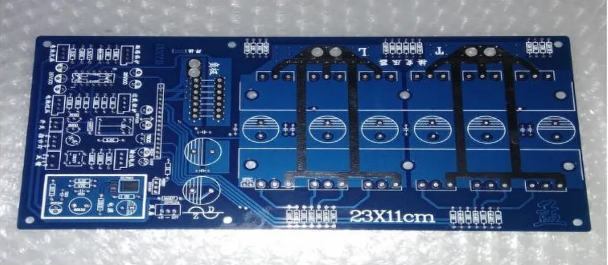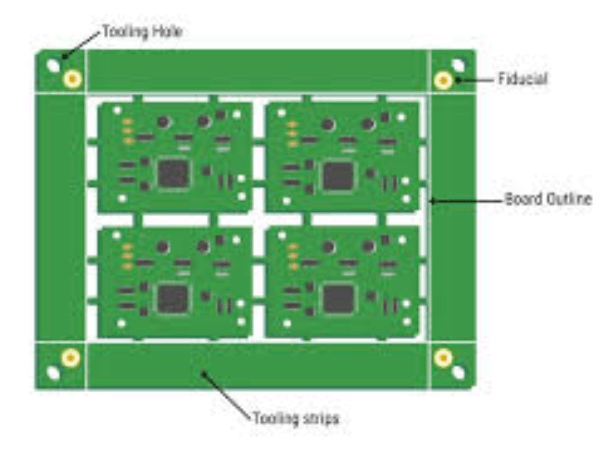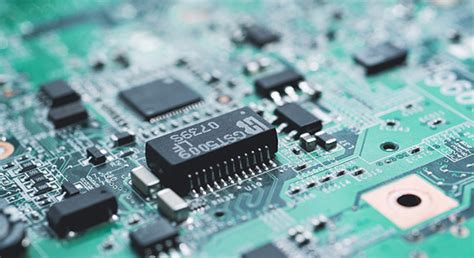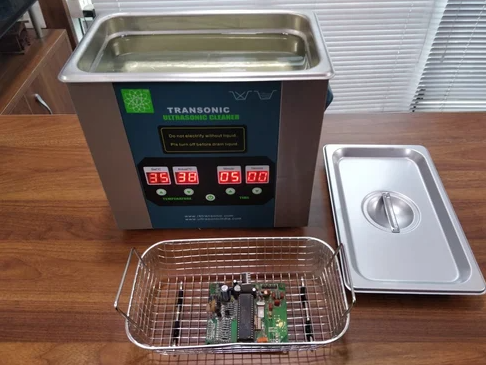Rogers hdi pcb circuit board
Advantages Of Using Rogers HDI PCB Circuit Boards In Modern Electronics
Rogers HDI PCB circuit boards have become a cornerstone in the realm of modern electronics, offering a multitude of advantages that cater to the ever-evolving demands of contemporary technology. High-Density Interconnect (HDI) technology, combined with Rogers’ advanced materials, provides a robust solution for the miniaturization and performance enhancement of electronic devices.
One of the primary benefits of using Rogers HDI PCB circuit boards is their ability to support higher component density.
This is particularly crucial in today’s electronics, where devices are becoming increasingly compact yet more powerful. By utilizing microvias, blind vias, and buried vias, HDI technology allows for more components to be placed on both sides of the PCB, thereby maximizing the use of available space. Consequently, this leads to smaller, lighter, and more efficient electronic devices, which are highly desirable in consumer electronics, medical devices, and aerospace applications.
In addition to supporting higher component density, Rogers HDI PCB circuit boards offer superior electrical performance.
The advanced materials used in these boards, such as Rogers’ high-frequency laminates, exhibit excellent dielectric properties and low signal loss. This is particularly important in high-speed and high-frequency applications, where signal integrity is paramount. The reduced signal loss and improved impedance control provided by Rogers materials ensure that electronic devices can operate at higher speeds with greater reliability. Furthermore, the thermal management capabilities of Rogers HDI PCB circuit boards are another significant advantage.
Modern electronic devices generate substantial amounts of heat, which can adversely affect performance and longevity. Rogers materials are designed to offer excellent thermal conductivity, effectively dissipating heat and maintaining optimal operating temperatures. This not only enhances the performance of the device but also extends its lifespan, making Rogers HDI PCB circuit boards a cost-effective solution in the long run.
Moreover, the mechanical strength and durability of Rogers HDI PCB circuit boards cannot be overlooked.
The advanced materials and manufacturing processes employed in these boards result in a product that can withstand the rigors of various environmental conditions. This is particularly beneficial in applications where reliability and durability are critical, such as in automotive and industrial electronics. The ability to endure mechanical stress, temperature fluctuations, and exposure to harsh environments ensures that devices remain functional and reliable over extended periods. Another noteworthy advantage of Rogers HDI PCB circuit boards is their compatibility with advanced manufacturing techniques. The precision and accuracy required in modern electronics manufacturing are well-supported by Rogers materials, which facilitate fine-line circuitry and complex multilayer designs. This compatibility not only streamlines the manufacturing process but also reduces the likelihood of defects and improves overall production yields.
Furthermore, the versatility of Rogers HDI PCB circuit boards makes them suitable for a wide range of applications.
From consumer electronics to telecommunications, medical devices to military and aerospace systems, the adaptability of these boards ensures that they can meet the specific requirements of various industries. This versatility, combined with the aforementioned advantages, underscores the value of Rogers HDI PCB circuit boards in modern electronics. In conclusion, the advantages of using Rogers HDI PCB circuit boards in modern electronics are manifold. Their ability to support higher component density, superior electrical performance, excellent thermal management, mechanical strength, compatibility with advanced manufacturing techniques, and versatility make them an indispensable component in the development of cutting-edge electronic devices. As technology continues to advance, the role of Rogers HDI PCB circuit boards in enabling innovation and enhancing performance will undoubtedly remain pivotal.
Design Tips For Optimizing Rogers HDI PCB Circuit Boards
When designing Rogers HDI PCB circuit boards, it is essential to consider several key factors to optimize performance and reliability. High-Density Interconnect (HDI) technology allows for more complex and compact designs, making it a popular choice for advanced electronic applications. To achieve the best results, designers must pay close attention to material selection, layer stack-up, via design, and signal integrity.
Firstly, selecting the appropriate Rogers material is crucial. Rogers Corporation offers a range of high-frequency laminates that provide excellent electrical performance and thermal stability. These materials are particularly beneficial for applications requiring low signal loss and high-speed data transmission. When choosing a Rogers laminate, consider factors such as dielectric constant (Dk), dissipation factor (Df), and thermal conductivity. A lower Dk value helps to minimize signal delay, while a low Df reduces signal loss. Additionally, high thermal conductivity ensures efficient heat dissipation, which is vital for maintaining the reliability of the circuit board.
Transitioning to the layer stack-up, it is important to design a well-balanced structure that supports the electrical and mechanical requirements of the HDI PCB.
A typical HDI stack-up includes multiple layers of signal, power, and ground planes. Proper layer arrangement helps to reduce electromagnetic interference (EMI) and crosstalk, thereby enhancing signal integrity. For instance, placing ground planes adjacent to signal layers can provide effective shielding and return paths for high-frequency signals. Moreover, maintaining symmetry in the stack-up minimizes warping and ensures mechanical stability during the manufacturing process.
Via design is another critical aspect of HDI PCB optimization.
Microvias, blind vias, and buried vias are commonly used in HDI designs to connect different layers without occupying excessive space. Microvias, in particular, offer the advantage of reduced parasitic inductance and capacitance, which is beneficial for high-speed signal transmission. When designing vias, it is essential to consider their placement and aspect ratio. Proper via placement can minimize signal reflection and impedance discontinuities, while an optimal aspect ratio ensures reliable via formation during fabrication. Additionally, using staggered or stacked microvias can further enhance routing density and design flexibility.
Signal integrity is paramount in HDI PCB design, especially for high-frequency applications.
To maintain signal integrity, designers should focus on impedance control, trace width, and spacing. Controlled impedance ensures consistent signal transmission by matching the impedance of the transmission line to the source and load. This can be achieved by carefully selecting trace width and spacing based on the dielectric properties of the Rogers material and the desired impedance value. Furthermore, minimizing trace length and avoiding sharp bends can reduce signal degradation and reflection.
In conclusion, optimizing Rogers HDI PCB circuit boards requires a comprehensive approach that encompasses material selection, layer stack-up, via design, and signal integrity. By carefully considering these factors, designers can create high-performance and reliable HDI PCBs suitable for advanced electronic applications. The use of Rogers high-frequency laminates, combined with meticulous design practices, ensures that the final product meets the stringent demands of modern technology. As HDI technology continues to evolve, staying informed about the latest design techniques and material advancements will be essential for achieving optimal results.
Comparing Rogers HDI PCB Circuit Boards To Traditional PCB Materials
Rogers HDI PCB circuit boards represent a significant advancement in the field of printed circuit board technology, offering numerous advantages over traditional PCB materials. High-Density Interconnect (HDI) technology, combined with Rogers’ specialized materials, provides enhanced performance characteristics that are crucial for modern electronic applications. To fully appreciate the benefits of Rogers HDI PCB circuit boards, it is essential to compare them with traditional PCB materials, examining aspects such as material properties, performance, and application suitability.
Traditional PCB materials, such as FR-4, have been the industry standard for many years.
FR-4 is a composite material made of woven fiberglass cloth with an epoxy resin binder that is flame resistant. While FR-4 is cost-effective and widely used, it has limitations in terms of signal integrity, thermal management, and miniaturization. As electronic devices become more complex and compact, the demand for materials that can support higher frequencies, better thermal performance, and finer geometries has increased.
Rogers HDI PCB circuit boards address these limitations by utilizing advanced materials that offer superior electrical and thermal properties.
Rogers Corporation, a leader in engineered materials, produces laminates and prepregs specifically designed for high-frequency and high-speed applications. These materials exhibit low dielectric constant (Dk) and low dissipation factor (Df), which are critical for maintaining signal integrity at high frequencies. In contrast, traditional FR-4 materials have higher Dk and Df values, leading to greater signal loss and potential performance degradation in high-speed circuits.
Moreover, Rogers HDI PCB circuit boards excel in thermal management.
Effective heat dissipation is crucial for the reliability and longevity of electronic components, especially in high-power applications. Rogers materials have higher thermal conductivity compared to FR-4, allowing for more efficient heat transfer and reducing the risk of thermal-related failures. This makes Rogers HDI PCBs particularly suitable for applications such as power amplifiers, RF and microwave circuits, and other high-power electronic systems.
Another significant advantage of Rogers HDI PCB circuit boards is their ability to support miniaturization and higher component density.
HDI technology enables the creation of smaller vias, finer lines, and tighter spacing, which are essential for modern electronic devices that demand compact and lightweight designs. Traditional PCB materials, while adequate for many applications, often struggle to meet the stringent requirements of miniaturized circuits. Rogers HDI PCBs, with their advanced materials and manufacturing techniques, provide the necessary precision and reliability for these cutting-edge applications.
Furthermore, the versatility of Rogers HDI PCB circuit boards extends to their application range.
They are widely used in industries such as telecommunications, aerospace, defense, and medical devices, where performance and reliability are paramount. The ability to maintain signal integrity at high frequencies, coupled with superior thermal management and support for miniaturization, makes Rogers HDI PCBs an ideal choice for these demanding sectors.
In conclusion, while traditional PCB materials like FR-4 have served the industry well for many years, the evolving demands of modern electronics necessitate more advanced solutions. Rogers HDI PCB circuit boards offer significant improvements in signal integrity, thermal management, and miniaturization capabilities. By leveraging advanced materials and HDI technology, Rogers HDI PCBs provide the performance and reliability required for today’s high-frequency, high-speed, and high-power applications. As electronic devices continue to advance, the adoption of Rogers HDI PCB circuit boards is likely to increase, driving further innovation and development in the field of printed circuit board technology.
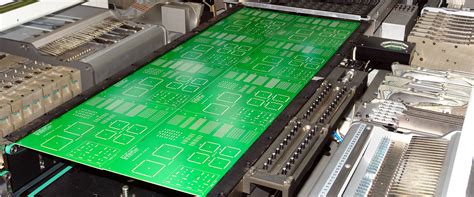
Common Applications Of Rogers HDI PCB Circuit Boards In High-Frequency Devices
Rogers HDI PCB circuit boards are renowned for their exceptional performance in high-frequency applications, making them indispensable in various advanced technological fields. These circuit boards, constructed from high-frequency laminates, offer superior electrical properties, thermal management, and mechanical stability, which are crucial for the reliable operation of high-frequency devices. One of the most prominent applications of Rogers HDI PCB circuit boards is in the telecommunications industry. With the ever-increasing demand for faster data transmission and higher bandwidth, telecommunications equipment such as base stations, antennas, and satellite communication systems rely heavily on these advanced circuit boards. The low dielectric constant and low loss tangent of Rogers materials ensure minimal signal loss and distortion, thereby enhancing the overall performance and efficiency of communication systems.
In addition to telecommunications, Rogers HDI PCB circuit boards are extensively used in the aerospace and defense sectors.
The stringent requirements for reliability, durability, and performance in these industries necessitate the use of high-quality materials. Rogers HDI PCBs meet these demands by providing excellent thermal management and resistance to harsh environmental conditions. They are commonly found in radar systems, avionics, and electronic warfare equipment, where precise signal integrity and robust performance are paramount. The ability of Rogers HDI PCBs to maintain stable electrical properties under extreme conditions makes them ideal for these critical applications.
Moreover, the automotive industry has also embraced Rogers HDI PCB circuit boards, particularly in the development of advanced driver-assistance systems (ADAS) and autonomous vehicles.
These systems require high-frequency components to process vast amounts of data in real-time, ensuring safe and efficient vehicle operation. Rogers HDI PCBs offer the necessary high-speed signal transmission and reliability, enabling the seamless integration of sensors, cameras, and communication modules. As the automotive industry continues to evolve towards more sophisticated and connected vehicles, the demand for Rogers HDI PCBs is expected to grow significantly.
Furthermore, the medical field benefits greatly from the use of Rogers HDI PCB circuit boards in various diagnostic and therapeutic devices.
Medical imaging equipment, such as MRI and CT scanners, as well as portable diagnostic tools, rely on high-frequency signals for accurate and efficient operation. The superior electrical performance and thermal stability of Rogers HDI PCBs ensure the precision and reliability required in these critical medical applications. Additionally, the miniaturization capabilities of HDI technology allow for the development of compact and portable medical devices, enhancing patient care and diagnostic capabilities.
In the realm of consumer electronics, Rogers HDI PCB circuit boards play a vital role in the development of high-performance devices such as smartphones, tablets, and wearable technology.
The demand for faster processing speeds, higher data rates, and improved battery life drives the need for advanced circuit board materials. Rogers HDI PCBs provide the necessary high-frequency performance and thermal management, enabling the production of sleek, efficient, and powerful consumer electronic devices. As technology continues to advance, the integration of Rogers HDI PCBs in consumer electronics is expected to expand, further enhancing device capabilities and user experiences.
In conclusion, Rogers HDI PCB circuit boards are integral to the advancement of high-frequency devices across various industries. Their superior electrical properties, thermal management, and mechanical stability make them the preferred choice for applications in telecommunications, aerospace and defense, automotive, medical, and consumer electronics. As technological demands continue to evolve, the role of Rogers HDI PCBs in enabling high-frequency performance and reliability will remain crucial, driving innovation and progress in these critical fields.


